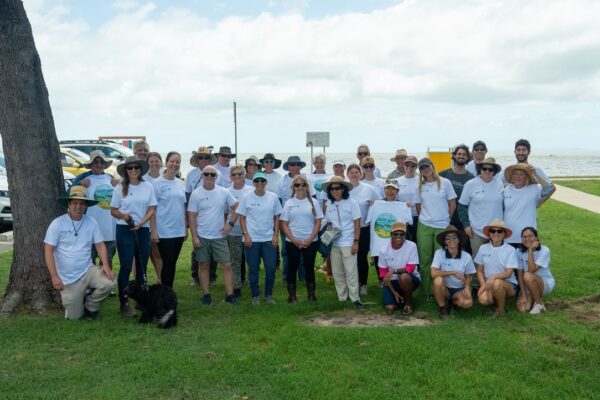The New York Times reports that for the first time since the 1930’s, federal biologists confirmed that a leatherback sea turtle has nested on a Texas beach, at the Padre Island National Seashore near Corpus Christi.
Last Friday, staff conducting a beach patrol found turtle tracks and a few exposed eggs. They were thought at first to be those of a green turtle. But the eggs and the width of the tracks, more than six feet across, were later determined by a park biologist, Cynthia Rubio, to be from a leatherback. The giant, ancient, endangered turtles, some the size of a Smart Car, have until now only been known to nest in four spots in the United States – with about three dozen females a year laying eggs on beaches along the east coast of Florida and slightly larger nesting populations in Puerto Rico and the U.S. Virgin Islands. There is evidence of nesting in North Carolina as well.
Wednesday also saw a champion in the “Great Turtle Race,” in which students and turtle fans tracked the meanderings of 11 radio-tagged leatherbacks in the Pacific Ocean. The first to reach the International Date Line was a turtle named Saphira II, sponsored by the Bullis Charter School of Los Altos, Calif.
The Census of Marine life reorts that following in the wake of a last year’s Great Turtle Race success, the Great Turtle Race II: The Olympiad is being followed by school kids around the world. The race tracks eleven critically endangered Pacific leatherback turtles as they migrate from breeding grounds in Indonesia to foraging grounds out in the Pacific Ocean, or from the California coast to breeding sites in Indonesia.
Organized by TOPP, the Leatherback Trust, Drexel University, The Global Cause Foundation, and the Sea Turtle Restoration project and supported and sponsored by an international assemblage of conservation groups, public agencies, and educational institutions, the Great Turtle Race II aims to educate the public about the life cycle, migrations and ecology of the leatherback sea turtle, as well as efforts to conserve this 100 million year old species. To view the race, root on your favorite turtle, learn more about leatherbacks and conservation efforts, or get involved please visit: The Great Sea Turtle Race II.



